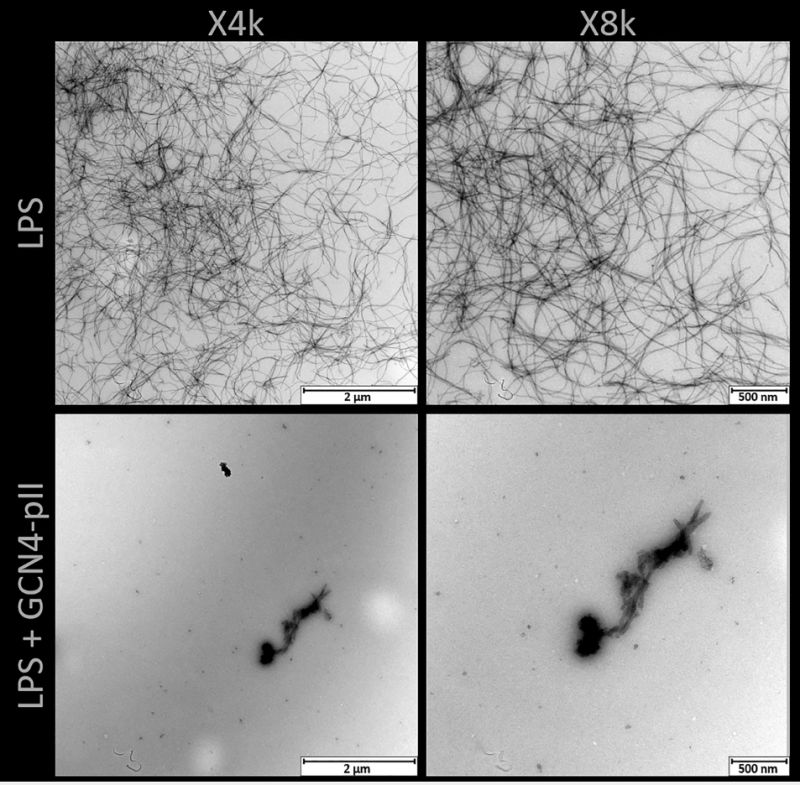Scientists discover a yeast protein capable of binding bacterial LPS

The hair-like or wormlike structures from the image above are actually LPS.
They are from S. typhimurium and detected using Transmission Electron Microscopy imaging . Scientists have surprisingly found a ubiquitous protein from yeast (GCN4-pII) which binds bacteria lipopolysaccharides (LPS) with picomolar affinity.
This protein can detect LPS at concentrations as low as 0.062 ng/mL, compared to the Limulus amoebocyte lysate (LAL) assay with a sensitivity as low as 0.125 ng/mL.
GCN4-pII dissolves LPS aggregates in solution and can be used for LPS removal.
At LPS-BioSciences, we use alternative specific biomarkers that target the lipid A moiety of LPS to detect trace amounts of LPS.
Learn more about our expertise by following the link below:
5 methods to quantify endotoxins
Read more: A trimeric coiled-coil motif binds bacterial lipopolysaccharides with picomolar affinity

